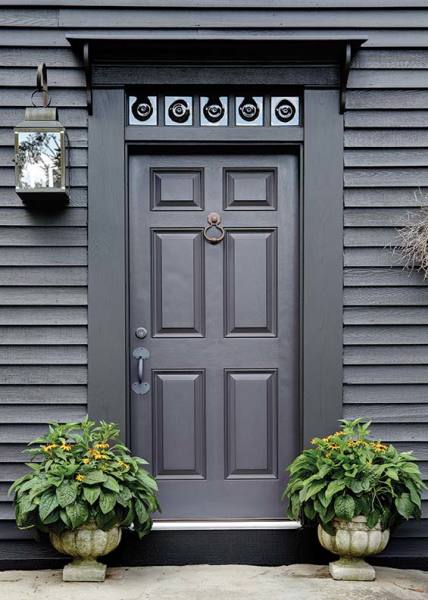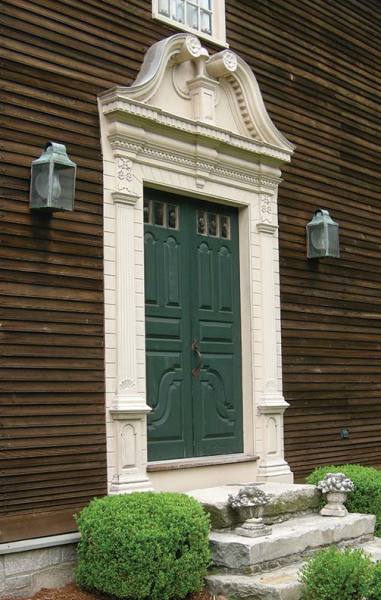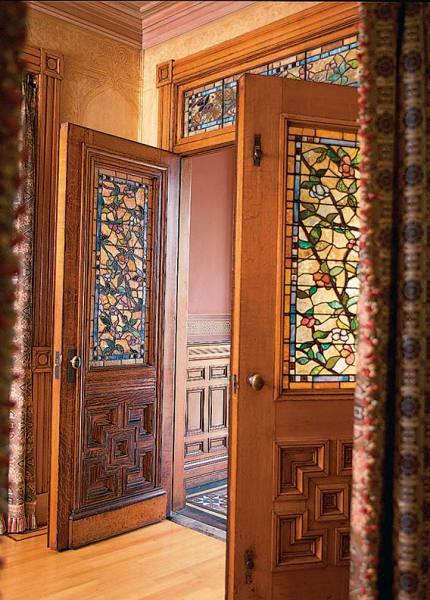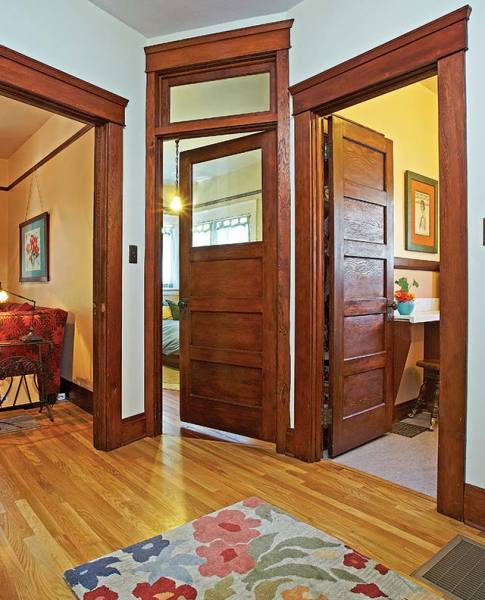
A six-panel door on a colonial-era house is topped with a transom of bullseye glass.
Brian Brown Images/iStock.com
Whether you live in a 1795 Federal or a Mid-century Modern ranch, count yourself lucky if your house has its original doors. Despite real improvements in the styling and surface finishes of newly made doors, there’s simply no comparison between a stock door and an original of a certain age—even when the old one has flaws or those inevitable character marks.
Older doors are made from real wood, the various components fit together like pieces in an architectural puzzle. The interlocking of parts not only imparts strength, but also allows for movement: seasonal shrinking and swelling with changes in temperature and humidity. A traditionally crafted door is a cunning survivor.
Most interior and exterior doors built between 1750 and 1940 are made with frame-and-panel construction, producing the common and easily recognized panel door that gets its name from the vertical panels that appear to float between flat cross and side pieces, called stiles and rails, that hold them in place.

Nothing is bolder the Georgian of the late colonial period (revived in the 20th century). The entry was often emphasized in an otherwise plain façade.
Courtesy of Sunderland Period Homes
The panels—usually four to six per door—can be almost pancake flat, at crisp right angles to the stiles and rails. More typically, however, they are beveled on all sides to create what’s called raised paneling. This approach creates architectural relief and enhances the illusion that the door is thicker and stouter than it actually is.
One of the key characteristics that makes a raised-panel door authentic is the profile of the bevel or angle. On Georgian-era doors, for instance, the profile is fairly shallow and more rounded than that of Federal doors. On Greek Revival and Shaker doors, the bevel is sharply angular. The profile on Colonial Revival raised-panel doors is typically deeper and curvier than on any actual colonial antecedent.
Accompanying such architectural styles as Second Empire, Italianate, and Queen Anne, paneled doors were used in matched pairs. These double doors might meet to form a unified arch, or be topped with a transom. Advances in millwork meant more elaborate use of architectural relief. Beveling and other embellishments were sometimes applied to the door itself rather than cut into the panel, saving time and effort on the shop floor.

In the second half of the 19th century, paneled doors were installed in matched pairs. These double doors opening to a vestibule are in the Aesthetic Movement style.
Eric Roth
Doors for houses built after 1900 tend to be more standard in size and features, which made it easy for builders to use them interchangeably on a wide range of houses. Another cost- and labor-saving innovation was the move to flat-panel doors, like the cabinet doors in kitchens of the period. Other panel styles include the five-panel, a type that appears in houses from Victorian Queen Anne to Arts & Crafts bungalow. A favorite for more utilitarian areas, the five-panel door is composed of horizontal panels top to bottom.
By the 1950s, of course, many interior and even exterior doors had lost all architectural relief and were a single plane of wood—either solid and intercut with decorative glazing, or, for many types of interior doors, with a hollow core. (Hard to believe that many of these doors are now old enough to be considered historic.)

The horizontal five-panel door is a favorite of the bungalow era. Sometimes one or two panels are replaced with glass, especially on exterior doors.
Jaimee Itagaki
A minor repair to the surface of a panel door usually involves filling gouges and cracks with wood putty, followed by sanding and several coats of paint. With a hollow-core door, though, there isn’t enough material to effect more than superficial repairs. While you can patch veneer with matching material, it takes practice and a steady hand to get a seamless result.
For a door that is badly damaged, it’s possible to find a replacement that approximates what’s been lost, or have one built to spec. Many building-supply stores still stock wood doors, but in some circumstances, you may want to consider a contemporary molded door. Unlike the architectural puzzle of a century-old door, they are cast over a honeycomb-like core, then covered with either a paint-ready finish or veneer. The difference is that the square-edged or beveled panels that create relief are molded right into the door.







